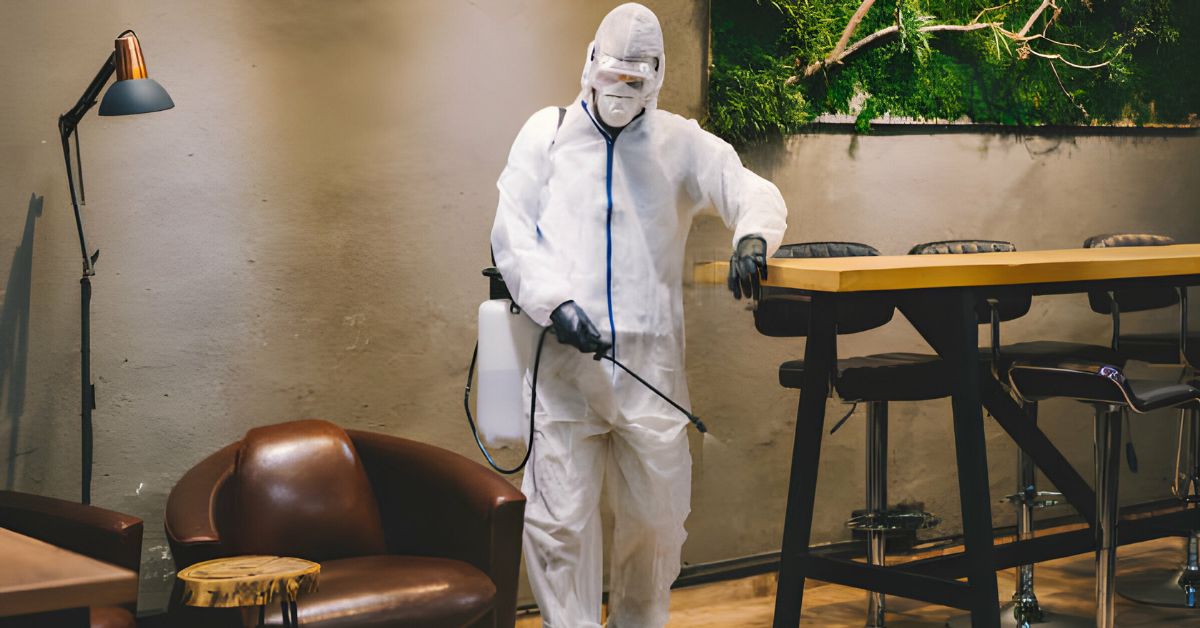
Managing a restaurant is a difficult task. Maintaining a pest-free environment at your restaurant is the most challenging task you have. Why? Because having bugs may seriously endanger the health of both your staff and customers in addition to damaging your reputation. Restaurant pests are more than simply an annoyance. They may cause serious financial losses, pollute food, and transmit illnesses. Customers’ faith in you can be eroded by a single pest-related incident. The reputation of your restaurant is at risk in the long run, therefore it’s not just about the immediate effects. We’ll explore the importance of pest control for restaurants and practical management techniques in this blog.
Cleanliness: Your First Line of Defence
Keeping things clean is essential to the success of pest control for restaurants. Make sure there are no food crumbs anywhere in your kitchen or dining room. Keep in mind that problems might be drawn to even the slightest crumbs. Be especially aware of the spaces beneath sinks and behind appliances. Your restaurant’s cleanliness is your first line of defence against pests.
Sealing Entry Points: Keeping Pests Out
Locate and seal any possible points of entry to stop the pests. Look for holes around doors and windows, wall cracks, and any other openings. A restaurant with good sealing is a powerful deterrent to pests.
Proper Food Storage: A Crucial Step
Food storage practices are a major factor in preventing pests. Food should be kept in sealed containers, and perishables should be kept chilled. Keep an eye out for expiration dates. Food that has been mishandled or aged is a magnet for pests. Keeping your storage spaces organised simplifies kitchen operations and aids with pest control for restaurants.
Effective Garbage Disposal
In Malaysia, an adequate pest control strategy for restaurants must include garbage disposal. Not only can garbage and spoilt food draw pests like cockroaches, flies, and rats, but they may infect other food items. To avoid insect infestations, it is imperative to use efficient waste disposal techniques.
Among the best methods for disposing of trash are:
- Daily gathering
- Keeping trash in containers with tight closures to keep pests out
- Using the right cleaning methods to keep the space clear of any stains or smells that can draw pests.
Frequent Pest Inspections: Be Proactive
The most effective way to spot insect issues early on is to conduct routine inspections. Teach your employees to recognise infestation symptoms. Check for real pests, gnaw marks or droppings. Regular inspections can prevent more serious infestations later on, especially in sensitive locations.
Implementing a Holistic Pest Management Strategy
An integrated approach is essential for preventing pests from entering your restaurant. Consider pest control as a long-term strategy rather than a quick remedy. It’s all about establishing an atmosphere that makes pests less likely to spread. Determine the frequent areas in your restaurant where pests congregate first. These could be places where extra moisture is present, where food is kept, or where garbage is gathered. Examine these areas often, and deal with any problems early on for efficient pest control for restaurants.
Training Staff on Pest Awareness and Prevention Techniques
In pest control, training your staff may make all the difference. Your employees have to be aware of the early warning indicators of pests and the value of upholding hygiene. Cleaning is not enough; you also need to know why and how to do things. Inform your employees of the dangers posed by typical restaurant pests. Teach them good cleaning techniques, garbage disposal techniques, and food storage techniques. By identifying possible issues before they worsen, they turn into your partners in the fight for pest control for restaurants.
Choosing and Working with Professional Pest Control Services
You need the specialists sometimes. Selecting a reputable pest control company is an important choice. Seek out a supplier with prior restaurant business experience. In addition to pest control for restaurants, they ought also to provide guidance on prevention. Be explicit about your expectations while working with them, and make sure they comprehend the particular requirements of your business. Keeping an area free of pests may be greatly aided by regular communication with your pest control service.
Understanding and Complying with Food Hygiene Laws
Following food hygiene regulations is important for safety reasons as well as compliance. These regulations are in place to safeguard both your clients and your company. Ensure that you are aware of the laws in your region and that you have trained your employees appropriately. This covers the right procedures for handling, storing, and preparing food. Frequent audits can assist in making sure you’re constantly working safely and in compliance.
Implementing Integrated Pest Management (IPM) for Long-Term Solutions
Intelligent, long-term pest control for restaurants is the goal of integrated pest management or IPM. It’s a tactic that blends many techniques to provide lasting results. Using pesticides as the final option, IPM places a strong emphasis on prevention. Recognise the life cycles of the pests you are dealing with before anything else. Put up physical obstacles to keep them out. If using chemicals is necessary, pick solutions that work well with the least amount of environmental damage.
